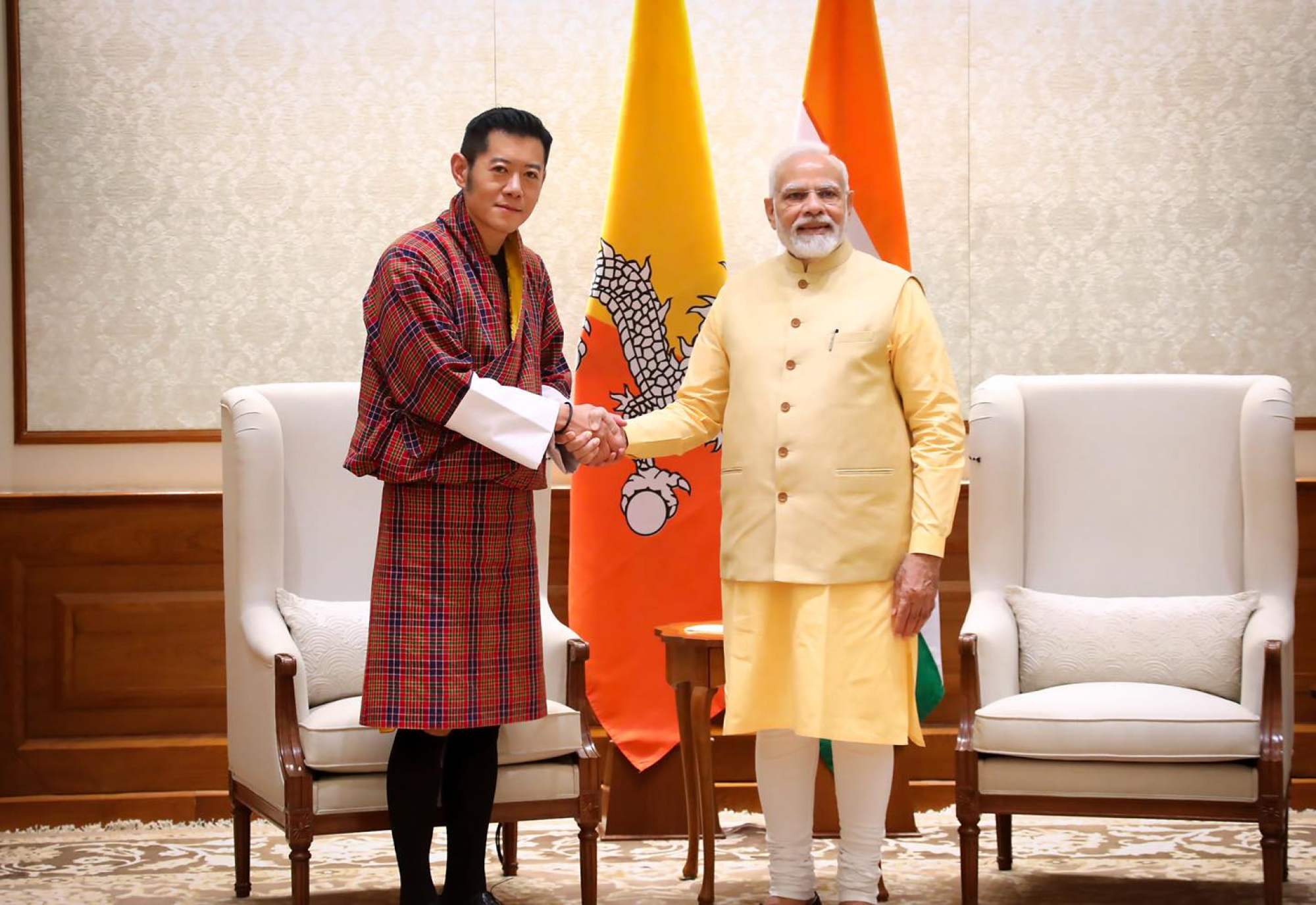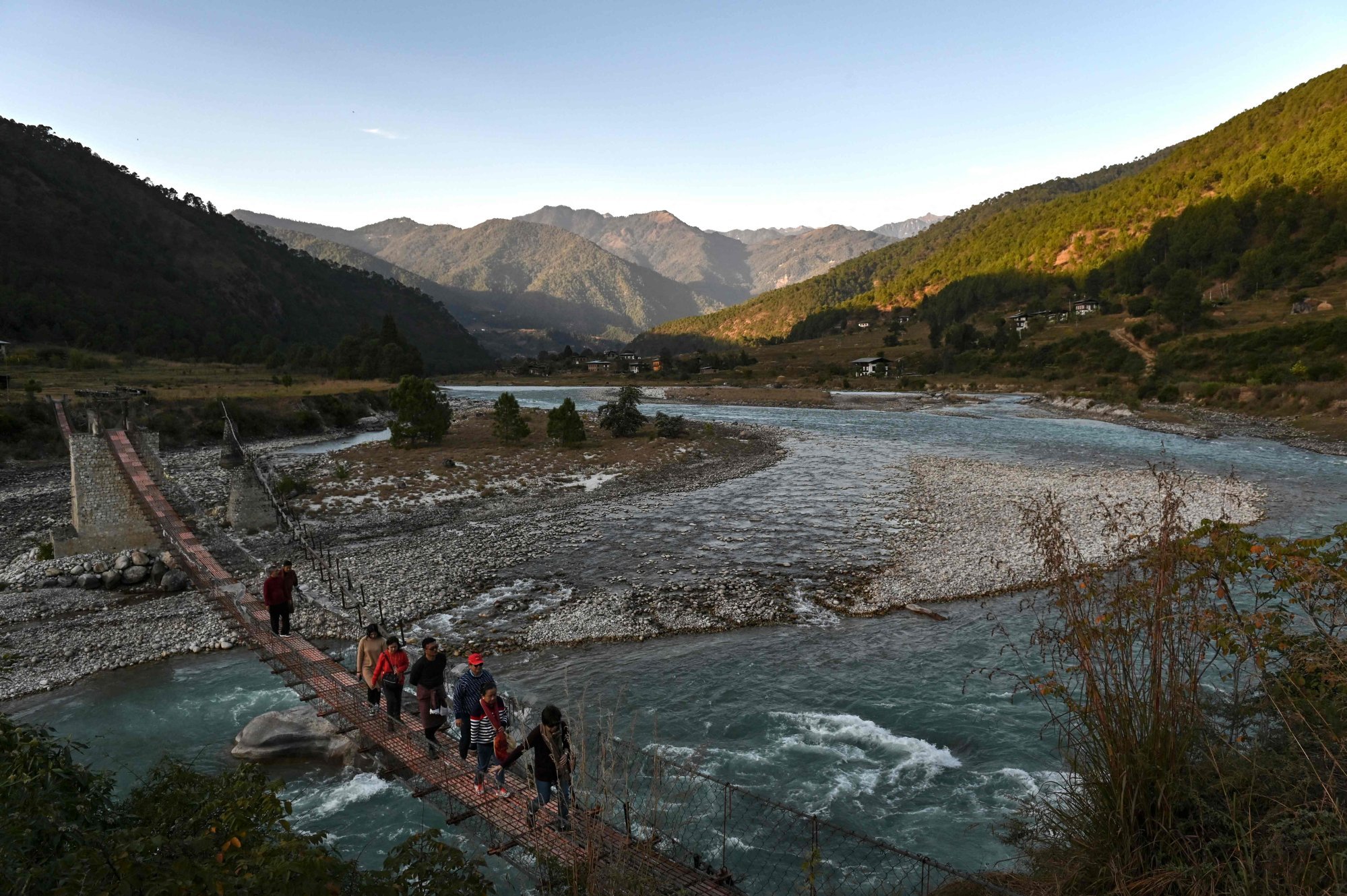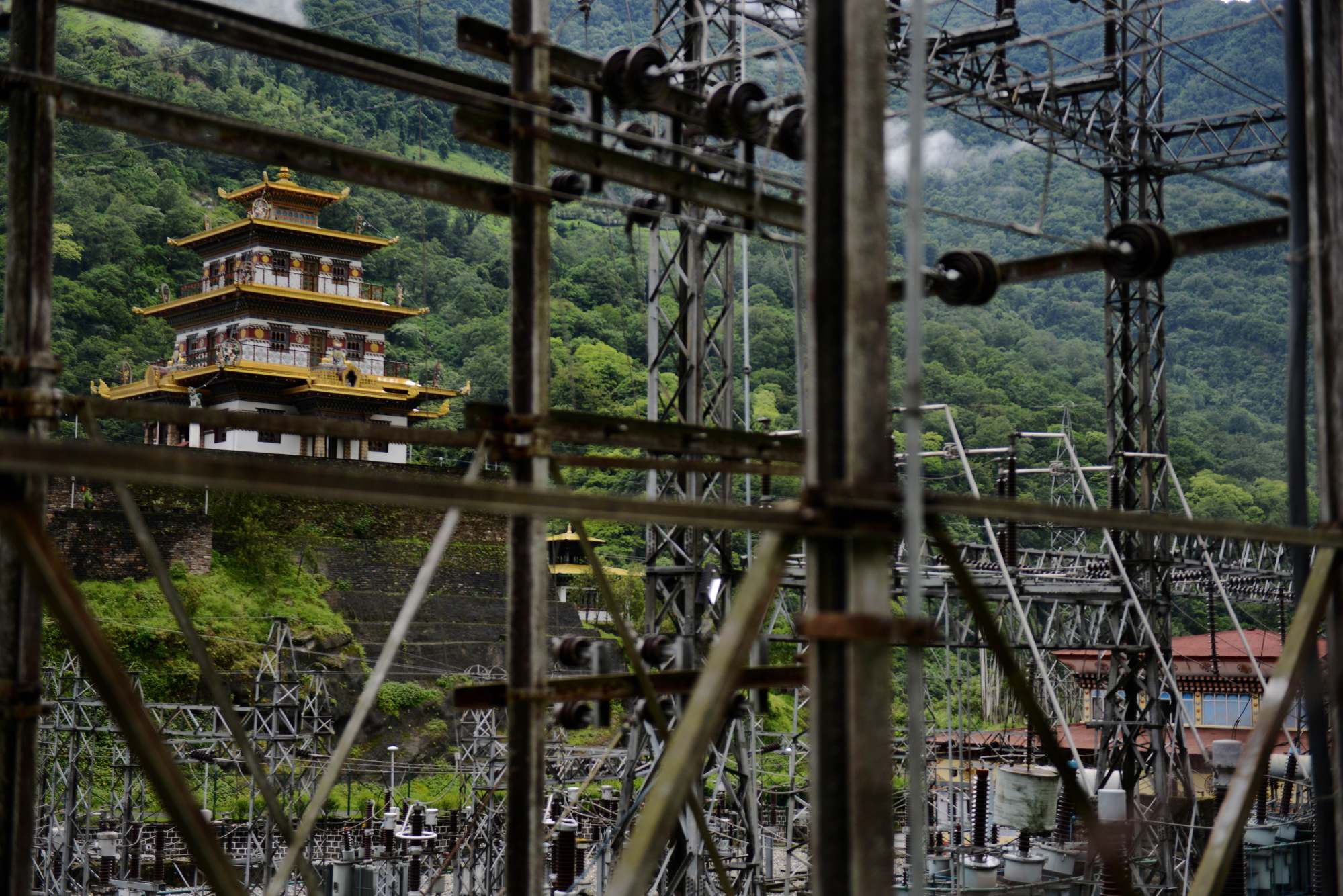Bhutan’s total installed capacity for hydrological power is currently about 2,500 megawatts, and it will add around 1,000 megawatts by next year. The government hopes to have a capacity of 4,000 megawatts in the medium term, according to Dahal.
“We are looking to discuss more hydro projects to the tune of about 10,000 megawatts,” he said, adding that these would be planned over the next decade.

On Bhutan’s National Day last month, King Jigme Khesar Namgyel Wangchuck had announced the nation would focus on developing Gelephu Mindfulness City, a special economic zone, as well as prioritise hydropower development.
Gelephu Mindfulness City will be developed in Bhutan’s Sarpang district, which borders Chirang district in India’s northeastern Assam state. Gelephu is one of three entry points to Bhutan from India, the others being Samdrup Jongkhar to its east and Phuntsholing to its west.
The success of the Gelephu project would depend on prioritising energy, connectivity and skills upgrades, the Bhutanese king said, adding that the key to energy development would be enhancing the installed capacity of hydropower projects by expediting construction.
The Himalayan state should aim to offer the most competitive electricity prices in the region to boost revenues as well as investment, he said.

Bhutan has been trying to revive its economy after the Covid-19 pandemic battered its aid- and tourism-reliant economy for three years.
There are a couple of hydropower projects planned with India over the long term as well as two in the pipeline, Dahal said, adding that financial details were yet to be finalised.
Cooperation in hydropower development has been a cornerstone of Bhutan’s bilateral ties with India, which buys electricity from the Himalayan kingdom.
The new projects being discussed with India are with strategic partners, including both private and state-run firms, according to Dahal.
For the kingdom to achieve its ambition of building a 10,000-megawatt capacity, financing of more than US$15 billion would be needed – a requirement that would be discussed with strategic partners, Dahal said.
Strategic partners would also have to wrestle with the problem of how to market the surplus power, which would vary from season to season, he added. “We would need to find a market for the surplus power in summer, but it can be consumed within Bhutan during winter.”

Pivot to clean energy
Dahal said the aim of the hydropower projects was to not only pivot the Himalayan kingdom’s industrial development, but also ensure it achieved the goal through clean power.
Data centres are networked facilities whose servers, storage systems and computing infrastructure enable organisations to process, store and disseminate large amounts of data: the hi-tech fuel of the modern economy.
The Himalayan kingdom will also explore with India development of hydrogen, which has been billed as the future of clean energy for transport.
Investors pump billions into India’s green economy amid ‘favourable climate’
Investors pump billions into India’s green economy amid ‘favourable climate’
Green hydrogen, which is produced by splitting water into hydrogen and oxygen using renewable energy, could replace fossil fuels for a variety of uses including the manufacture of commodities like steel and fertiliser as well as transport fuel.
“The hydrogen economy will take some time, but we want to be in that space. We are also looking at solar power development,” Dahal said, adding that the kingdom was looking to set up a 1,000-megawatt solar power project.
Geothermal energy – which draws upon water from underground reservoirs to the earth’s surface to produce steam for electricity generation – was another area that the country planned to explore, he added.

